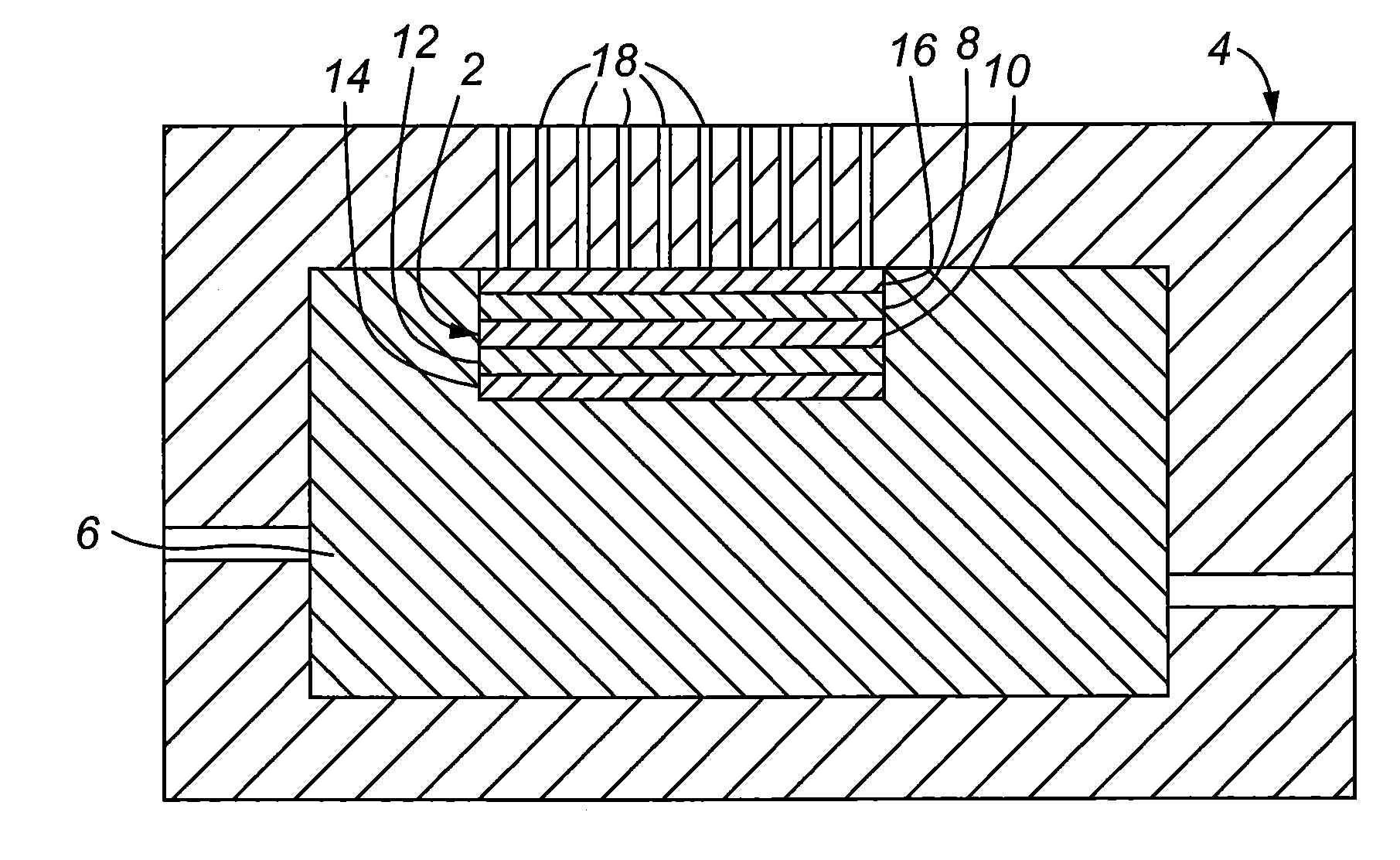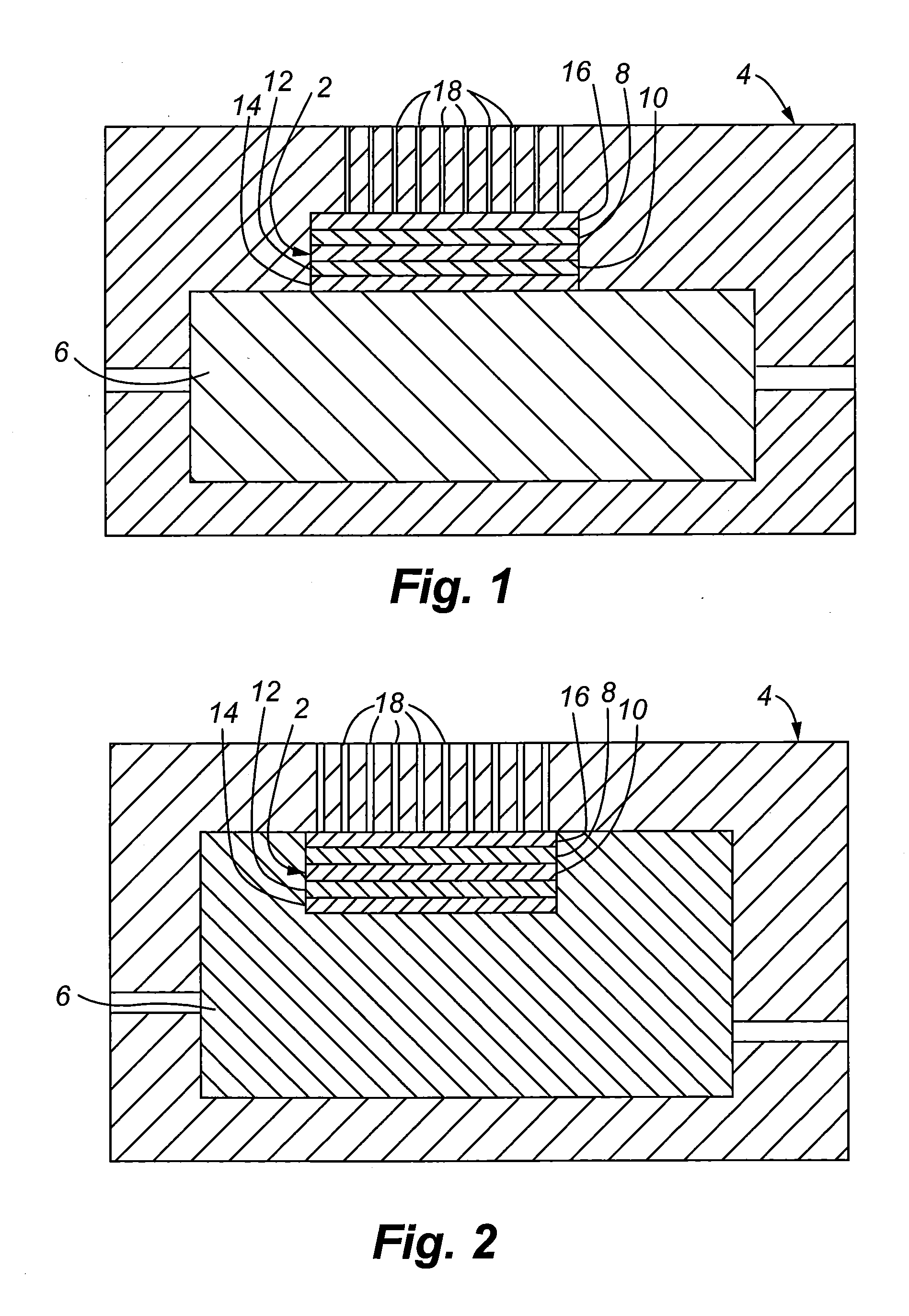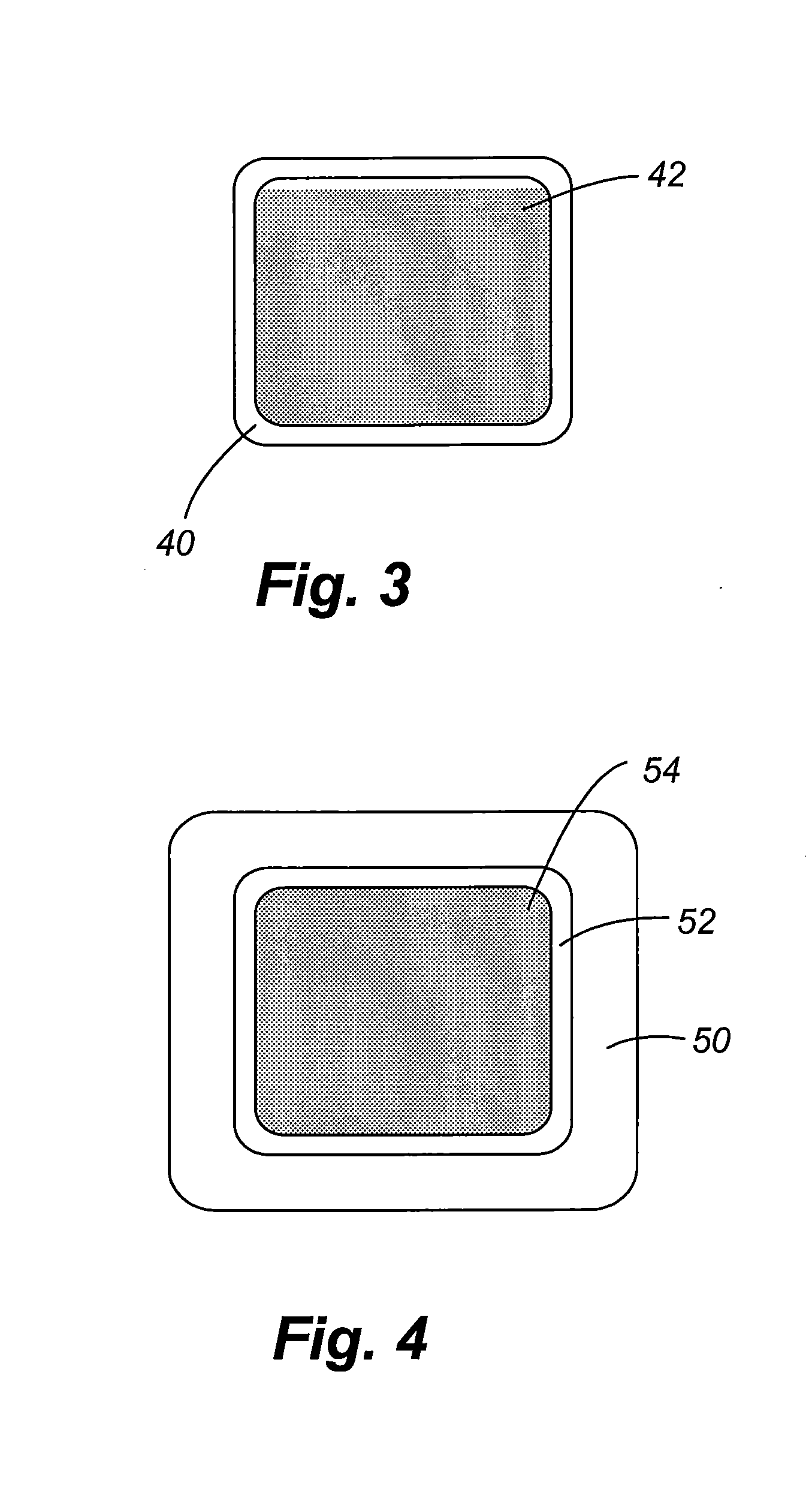Co-molded direct flock and flock transfer and methods of making same
a technology of direct flocking and co-molded articles, which is applied in the field of molded articles with flocked surfaces, can solve the problems of increasing the cost and time of processing, requiring additional processing and cost, and a large number of problems with imd technology, and achieves the effects of low cost, low cost and modest capital investmen
- Summary
- Abstract
- Description
- Claims
- Application Information
AI Technical Summary
Benefits of technology
Problems solved by technology
Method used
Image
Examples
Embodiment Construction
[0034]In one embodiment, a flock heat transfer type media is used rather than ink-printed film inserts or decorations to provide a plush, evenly-coated, three-dimensional single or multi-colored textured decoration molded together with the hot resins when the part is formed. Using flock transfer media, a plushly textured decoration is permanently attached to the surface of the molded part. To accomplish this the hot melt adhesive commonly used with flock heat transfer manufacturing is eliminated so it will not liquefy and ooze out around the decoration in the mold. In addition, another adhesive, such as a tie coat material or other compatible film, may be used instead of a normal hot melt to prevent oozing and to promote adhesion, melt bond and / or chemical compatibility with the molding resin, when injecting molding a flock transfer directly to the polymer molded article.
[0035]The mold may have a depression or locating pins or other mechanical parts to assist with aligning and holdi...
PUM
| Property | Measurement | Unit |
|---|---|---|
| temperature | aaaaa | aaaaa |
| temperature | aaaaa | aaaaa |
| resistant pressure | aaaaa | aaaaa |
Abstract
Description
Claims
Application Information
 Login to View More
Login to View More - R&D
- Intellectual Property
- Life Sciences
- Materials
- Tech Scout
- Unparalleled Data Quality
- Higher Quality Content
- 60% Fewer Hallucinations
Browse by: Latest US Patents, China's latest patents, Technical Efficacy Thesaurus, Application Domain, Technology Topic, Popular Technical Reports.
© 2025 PatSnap. All rights reserved.Legal|Privacy policy|Modern Slavery Act Transparency Statement|Sitemap|About US| Contact US: help@patsnap.com



